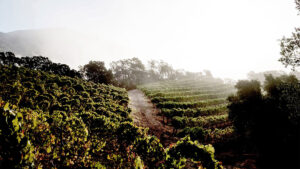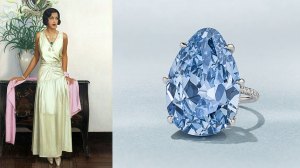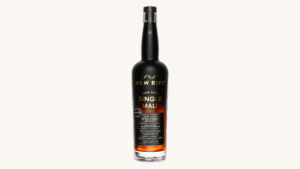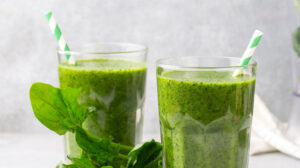I think of certain cocktails as being “inevitable.” The , the , the … these are drinks wherein the flavors work so well together, it was only a matter of time until someone put them together. These are also all drinks whose specific histories are lost to time for that exact reason. Who first mixed a ? Who cares! Even if it were knowable (which it’s not), it wouldn’t matter. It was inevitable.
The Elderflower Spritz is, similarly, inevitable. Combining elderflower with white wine (still or sparkling) and soda is the most obvious and viscerally delicious thing possible to do with a bottle of St-Germain. Interestingly, though, unlike the or or any of the other similarly inevitable drinks, St-Germain was only released in 2007, and so what’s fun about the Elderflower Spritz (and its resultant coterie of nearly identical cocktails, Hugo Spritz, the Hummingbird, and the St-Germain Royale) is that you can see this convergent evolution happen in the modern era and in real time.
In 2005, in the small northern Italian town of Naturno about 10 miles from the Austrian border, Roland Gruber invents the Hugo Spritz, initially a combination of Prosecco, soda water, mint, and a lemon balm syrup. Gruber also experiments with a syrup made from local elderflowers, which are abundant in late-spring and early-summer in that part of the world and whose bright, juicy floral qualities mix brilliantly with the exuberant acidity of sparkling wine. A few years later, St-Germain debuts, and this year-round and reliable source of elderflower flavor gets absorbed into the recipe for the Hugo Spritz, which becomes tremendously popular in and around Italy, Austria, and Germany.
The next year and most of a continent away, St-Germain is about to be released in the U.K. The brand contacts bartender Simon Difford for help with an original launch , and Difford immediately recognizes the capacity of St-Germain to complement the piquant fruit, floral, and mineral qualities in white wine. He creates the Elderflower Spritz, which combines St-Germain with soda water and a touch of flat white wine, in this case Sauvignon Blanc. He calls it the Elderflower Spritz.
Less than a year after that and on the other side of the Atlantic, had just opened their doors in the East Village, and the newly launched St-Germain was precisely the type of exciting and thoroughly mixable liqueur that caught their interest. Bartender Phil Ward initially makes a gin Old Fashioned that he calls the Elder Fashion, and then the next year, too astute to ignore how well the flavors would go with sparkling wine, he adds and calls it the Elder Fashion Royale, the suffix “royale,” as with the famous , meaning “with Champagne.”
And finally—some of you know this drink as a Hummingbird, but why? By the 2010s, St-Germain was already a powerhouse. They hadn’t yet sold to Bacardi but were becoming a household name, and what they were calling the St-Germain Cocktail (St-Germain, sparkling wine, soda, and a lemon twist) was the signature recipe of the brand. In late 2011, founder Rob Cooper somehow got it into his head that the mixture should have a more cocktail-like name, so they rebranded the St-Germain cocktail as the “Hummingbird.” The rebrand didn’t last—by late February 2012, the official website had reverted the name to the “St-Germain Cocktail.” It’s possible Cooper was onto something, though, because even though the Hummingbird existed for barely a season, the name has persisted through the echo chamber of recipe blogs and bartender memories. Because of these three months over 13 years ago, I personally have been asked for a Hummingbird while behind the bar at least half a dozen times in the last few years.
Today, St-Germain has absorbed all of them (except the Hummingbird) into official brand cocktails and present all three with subtle differences: The Hugo Spritz and St-Germain Spritz are identical but for mint in the former and a lemon twist in the latter, and the St-Germain Royale ditches the soda water and trades Prosecco for Champagne. We find this unhelpful, so in light of Mother’s Day—the kind of day for which pretty, low-ABV, and inevitably delicious sparkling cocktails are most in need—we offer our favorite recipe, and below that, some guidance on the variables to make the best version for you.
Elderflower Spritz
- 0.5 oz. St-Germain
- 3 oz. Champagne
- 2 oz. soda water
Make sure the soda water and the Champagne are well chilled. Add ice to a Collins glass or wine glass (gently!) and add ingredients, stirring to combine. Garnish with a mint sprig, clapped gently between your hands to release the oils.
NOTES ON INGREDIENTS
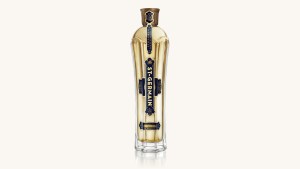
Elderflower Liqueur: This is not an advertisement for St-Germain, I promise. There are others—St. Elder is drier, Giffard has a good one, but I must say St-Germain has become synonymous with the category not only because it was the first to be a global success but because it’s so good. St-Germain has a juicy, tart floral quality that has earned it the somewhat dubious praise of “bartender’s ketchup,” which is to say, it mixes unusually well in many different situations. I advise it.
As for quantities. 0.5 oz. of elderflower liqueur will give a gentle floral boost to the flavors of the spritz, present but subtle, with not much excess sweetness. This is what I personally prefer. That said, there’s a lot of wiggle room here for personal tastes; if you like your spritzes a bit sweeter or are a particular fan of the elderflower flavor, you can go ahead and double that and it’s still a great drink.
Sparkling Wine: Again, it was all pretty good, but if you’re trying to make this drink as good as it can be, use Brut Champagne. Yes, Prosecco is traditional and tasty, but Prosecco is already bright fruit and florals, and so while it and elderflower aren’t exactly playing the same note, they are in the same octave. Champagne, by contrast, goes through secondary fermentation in the bottle, so it (along with its less expensive sibling Cremant, and even less expensive cousin Cava) has a deep, bready quality that is more like a duet.
We also tried the original suggestion from Difford on Sauvignon Blanc, and it was good, but not as good as Champagne. In all honesty, I can’t think of a white wine that wouldn’t work in this case. Jeffrey Morgenthaler had the initial instinct to pair St-Germain with an Oregon Pinot Gris, which I’m sure was delicious. You can do anything from Chardonnay to Viognier and it would be good. The flavors, as mentioned, are so good as to be inevitable. We just think Champagne is best.
Soda Water: What’s the soda water doing here? It’s adding space between the flavors and making it all more refreshing. If you don’t have soda water you can obviously make it work with just the wine, but the soda helps keep the proof low, the refreshment high, and the flavors from being too intense. It’s recommended.
Garnish: The question here is mint vs. lemon peel, and it’s not aesthetic—they make very different final products. Lemon peel is traditional—Rob Cooper reportedly would instruct his team to refuse to serve their signature cocktail unless it had a lemon peel—which so complements the flavors at work as to nearly disappear.
Mint, on the other hand, brings in something new. Mint is more annoying to keep around and more annoying to deal with, but as a bartender, the mint version is the one that more vividly grabs and holds my attention, and the one I prefer.
Put another way—they’re equally delicious, but mint is more interesting. Take that for what it’s worth.
Authors
-

Jason O’Bryan
Jason O’Bryan has set up a professional life at the intersection of writing and cocktails. He’s been managing cocktail bars for the last twelve years, first in Boston and now in San Diego, where he’s…
Credit: robbreport.com



